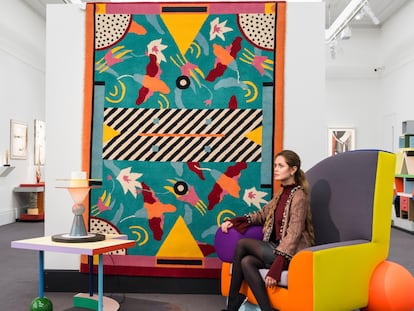Oki Sato, the minimalist designer inspired by manga cat Doraemon
Like the cosmic feline, the founder of design studio Nendo has a magical talent for producing infinite, people-pleasing inventions from nothing
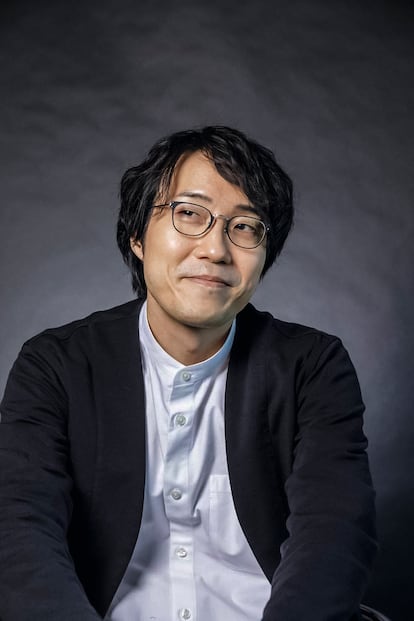
Oki Sato, founder of the Nendo design studio, which has been described by specialists as “the epitome of excellence in Japanese minimalist design”, says he has two mentors: Issey Miyake, the couturier who revolutionized 20th century textiles through his combination of tradition and technology, and Doraemon, the cosmic cat whose manga adventures have brightened Japanese childhoods for over five decades. Miyake (1938-2022) once offered Sato a commission that proved to be a decisive factor in the latter’s career: a seat christened the Cabbage, and Sato learned to find abundance in scarcity and elegance in simplicity from the fashion icon. With the help of the Doraemon stories, which Sato read as a child in Toronto, where he was born in 1977, he developed his taste for inventing objects, and learned to wonder at the trivial details of everyday life.
“When I came to Japan when I was 10, I was really shocked, because I discovered the world of Doraemon. For me, it was the future, in a way.” Sato receives EL PAÍS in his studio, which occupies three stories in a Kenzo Tange-designed building in the central Tokyo neighborhood of Akasaka. He has disdain for the typical Japanese parsimony exercised during first meetings, and his words are delivered in a festive tone, pronounced in impeccable English amidst raucous bursts of laughter. “I really feel that Doraemon is my teacher, my mentor, because no one taught me to design products,” he says, referring to the unusual gadgets employed by the 22nd century cat-robot. To help his master, Nobita, a good-natured by clumsy boy who gets bad grades, Doraemon produces a number of devices from his pocket. Sato underlines the fact that a Doraemon invention requires no instructions. “Even Nobita can use it. It solves problems, but it’s not a perfect object, which creates the drama, which creates the story and which gives spice to everyday life.”
Nendo’s portfolio includes, along with public parks, buildings and boats, a soccer ball that is put together like a puzzle, a beer can with two ring pulls to pour out foam before liquid and a lamp that opens up like a flower with the heat of its bulb. The Japanese word “nendo” has two meanings: clay and plasteline. Sato opted for the second meaning when he founded his studio in 2002, as it better conveys the playful spirit that governs nearly all his creations.
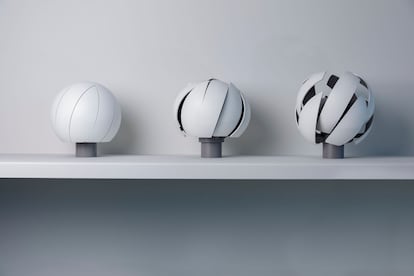
Sato’s initial Doraemon moment took place during the his very first design job, decorating a French restaurant that a childhood friend was opening in a hidden corner of Tokyo. A sparse budget was coupled with an anodyne two-story building in an urban environment that had little to do with the Parisian glamour to which his enthusiastic client aspired. As if in possession of the futuristic cat’s prodigious pocket, the designer got a hold of 985 feet of linen and used it to envelope the entire building, including its walls, tables and chairs. With a few well-placed lightbulbs, he turned the place into an enormous box that shone with a warm light that by night, reflected the waters of a neighboring canal. An ingenious solution that helped the cuisine of the resulting Canvas restaurant to be reviewed by several publications. Eventually, the project attracted the attention of an important customer: Issey Miyake, the visionary fashion designer.
Miyake became a regular at the restaurant, and filled it with foreign clientele. In 2008, he invited Sato to participate in the XXIst Century Man exhibition, a group show of 11 international designers at 21_21 Design Sight, the first Tokyo museum dedicated to design, which was founded by Miyake in the Roppongi neighborhood’s Midtown mall.
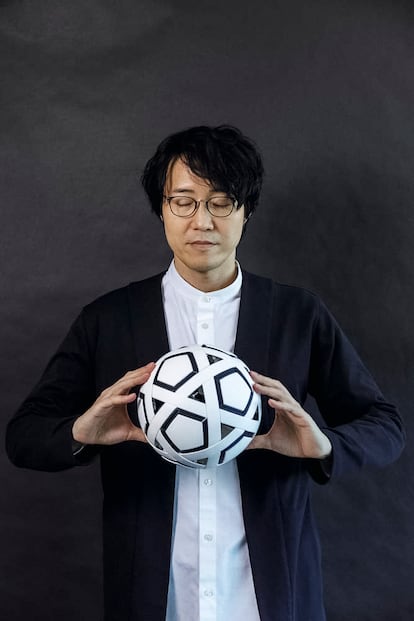
Miyake asked him to design a chair from the paper used in Miyake’s celebrated line of permanent-fold garments named Pleats Please. To achieve such long-lasting pleats, a reimagining of the iconic Delphos dress by Granada designer Mariano Fortuny, Miyake’s works were pleated between two layers of paper that were stored in thick rolls before being discarded. In keeping with the pleats’ concept, Sato made a vertical cut in the upper half of one such roll and unfurled the layers, like the leaves of a corncob, to create a soft base to sit on. He showed it to Miyake, warning him that it was still in development, but the fashion icon was fascinated, and told him to leave it alone, that the design was complete.
“And then suddenly, I felt this great freedom in terms of designing things. I thought that there is not a singular goal, and that it’s really up to you. If you feel that it’s finished, it’s finished,” recalls Sato. The exhibition, which was curated by Miyake, consecrated Sato’s name in the eyes of demanding local critics. Just years earlier, having recently completed his doctorate at the University of Waseda, Sato had discovered his minimalist path while participating in the Milan Furniture Fair. He confesses that, upon seeing the works of Western designers, he was daunted by their exuberance of shapes and colors. “I thought that there was no way that I can compete with them.” He decided “not to shout like them, but to whisper a nice small story. I had to be a minimalist,” he remembers.

He attributes the Japanese tendency for minimalism to cultural roots. “That is the way we feel, that is the way we see things. It is rooted to our culture in terms of literature, in terms of art, in terms of in food as well.” He cites French cuisine and its penchant for adding condiments and sauces and combining different flavors in a single dish. “But in Japan, it would be more about taking away. I think it’s not about adding, but it’s about subtracting things. It’s about finding the core and the core value of things.” He refers to sashimi and a chef’s minimalist skill of working with the freshness of the ingredient alone.
Though minimalism is evident in the purity of his lines and his predilection for black and white, when it comes time to create, story takes precedence over style. “There’s a story that is hidden behind the object. That is what really inspires me, and that is what I would really like to translate and deliver back to everyday life,” he explains. When the sporting goods manufacturer Molten invited him to design a soccer ball, Sato, who laughingly admits that he knows next to nothing about the sport, didn’t dive into Google searches or attend a single game. His inspiration was born from the story of children around the world who can’t afford to buy a ball and, if they get their hands on one, have no way of getting it back to its original shape if it gets punctured. With an idea in his head for a cheap ball that was easy to transport and maintain, he designed a sphere that was composed of 54 recycled polypropylene pieces that could be assembled like a puzzle. The ball could be mailed in a flat envelope and, once assembled, resembled the traditional bamboo ball that is used in some Asian countries.
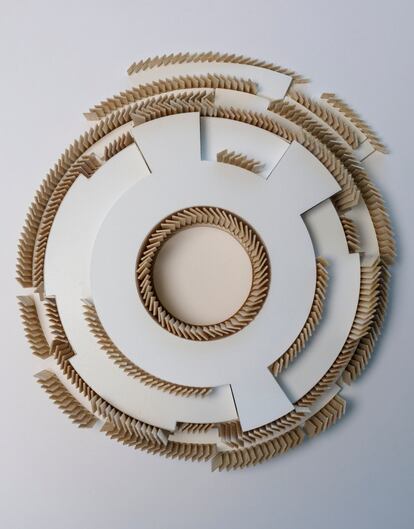
The imprint that manga has left on his work is evident in non-commercial projects Sato has completed for galleries and museums around the world. For the New York gallery Friedman Benda, he devised the collection 50 Manga Chairs, a series of steel seats created from the visual elements of manga — its vignettes, and lines expressing movement, emotions and sound effects. In the French design fair Maison & Objet Paris, he paid homage to the onomatopoeia, a rich linguistic element of Japanese manga that is often lost in translation, with a collection of chocolates that he named after words that described their texture, such as crunchy (goro-goro) and viscous (sube-sube).
His fascination with the manipulation of space and optical illusions made Nendo the ideal studio when it came to designing the 2018 exhibition of Dutch graphic artist M.C. Escher at the National Gallery of Victoria in Melbourne, Australia. With the use of a simple, house-shaped module repeated dozens of times, the visitor was immersed in bidimensional spaces that recalled the impossible universes of the Dutch illustrator.
The numerous recognitions that Sato has received include his designation by Newsweek as one of the 100 Japanese respected by the world, and a designer of the year award in publications like Wallpaper and Elle Décor. The entry for Nendo on digital catalog encyclopedia.design speaks of it as “the epitome of Japanese minimalist design excellence” and of its perfect symbiosis with global design sensibility. Sato’s most emblematic works are in the collections of New York’s Museum of Modern Art, London’s Victoria and Albert Museum, and the Parisian Centro Pompidou.
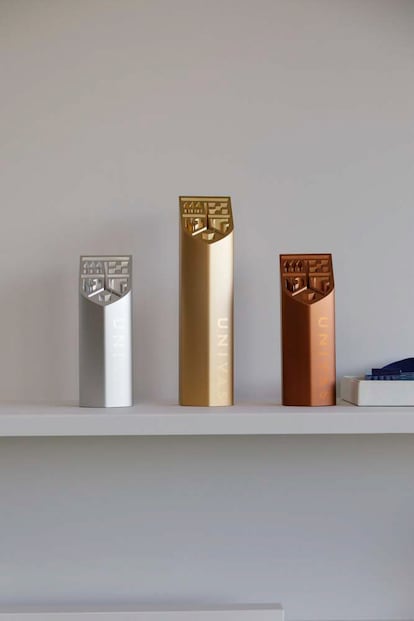
Nendo employs a team of 50 designers in Tokyo and two more in its Milan studio. Among its international clients are American Express, Coca-Cola, TAG Heuer, Tod’s, Camper, Baccarat, Starbucks, Louis Vuitton, Puma and furniture manufacturers like Minotti and Cappellini.
One of its highest-profile projects in Japan was the cauldron for the 2020 Tokyo Olympic Games, a sphere that opened into hemispheres and that, for the first time, employed a hydrogen-generated flame. Sato just finished the interior design for the next generation of high-speed TGV trains for France, and supervised the design of the Japanese pavilion for the Osaka Expo 2025, for which he will be the general producer.
Post-pandemic, he has returned to his jet-set itinerary, and many of his meetings take place in airport VIP lounges. “I’ve been to Barcelona so many times, but only to the airport. So I know very well about the airport, but nothing about the city,” he laments. To be able to simultaneously follow the progress of dozens of different projects, he holds to a daily routine in which he rises at the same hour, and is forever clad in an unvarying outfit of a white Muji shirt and black Uniqlo suit. Every day, he drinks a cup of coffee at the same cafeteria, walks his dog down the same street and eats his favorite soba noodle dish in the same restaurant.
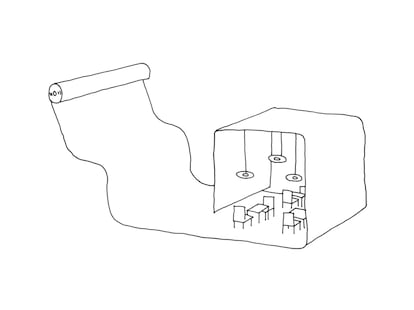
“If you repeat the same things for 20 years, you notice slight differences in every day. You notice the small cracks in the streets, the small scratches that were not there yesterday. You notice that it’s not the same guy that is making my soba today because it’s different, slightly different.”
He doesn’t seem to feel threatened by artificial intelligence and jokes that perhaps for the next interview, his responses will be provided by a bot. In all seriousness, he predicts that, due to its ability to handle data, AI will be perfect for designing mass consumer products like chewing gum wrappers. “But can it make mistakes? Like what I said about Doraemon, it’s not about perfection. What makes design beautiful in the end is that people die. All of our emotions, laughing, crying, getting angry, all these things are about how people will die in the end.” He returns to his festive tone and concludes with a quote from his teacher Miyake, a maxim delivered when asked to define the difference between art and design: Art can convey sadness. The function of design is to make people happy.

Sign up for our weekly newsletter to get more English-language news coverage from EL PAÍS USA Edition
Tu suscripción se está usando en otro dispositivo
¿Quieres añadir otro usuario a tu suscripción?
Si continúas leyendo en este dispositivo, no se podrá leer en el otro.
FlechaTu suscripción se está usando en otro dispositivo y solo puedes acceder a EL PAÍS desde un dispositivo a la vez.
Si quieres compartir tu cuenta, cambia tu suscripción a la modalidad Premium, así podrás añadir otro usuario. Cada uno accederá con su propia cuenta de email, lo que os permitirá personalizar vuestra experiencia en EL PAÍS.
¿Tienes una suscripción de empresa? Accede aquí para contratar más cuentas.
En el caso de no saber quién está usando tu cuenta, te recomendamos cambiar tu contraseña aquí.
Si decides continuar compartiendo tu cuenta, este mensaje se mostrará en tu dispositivo y en el de la otra persona que está usando tu cuenta de forma indefinida, afectando a tu experiencia de lectura. Puedes consultar aquí los términos y condiciones de la suscripción digital.
More information
Últimas noticias
Most viewed
- Sinaloa Cartel war is taking its toll on Los Chapitos
- Oona Chaplin: ‘I told James Cameron that I was living in a treehouse and starting a permaculture project with a friend’
- Reinhard Genzel, Nobel laureate in physics: ‘One-minute videos will never give you the truth’
- Why the price of coffee has skyrocketed: from Brazilian plantations to specialty coffee houses
- Silver prices are going crazy: This is what’s fueling the rally

